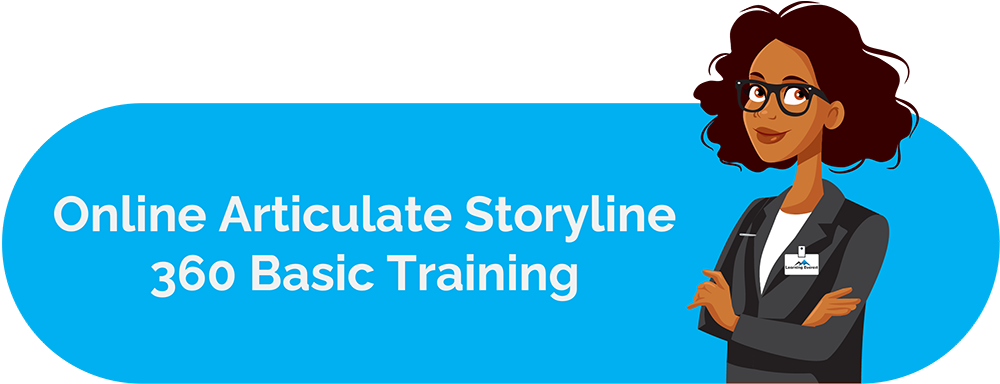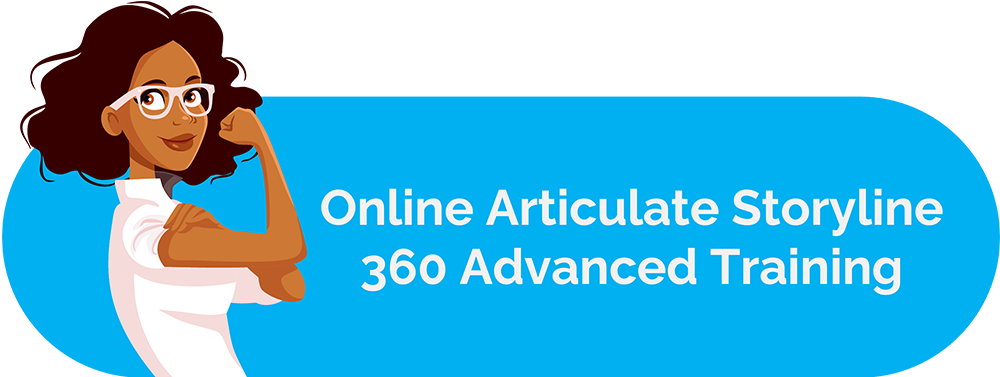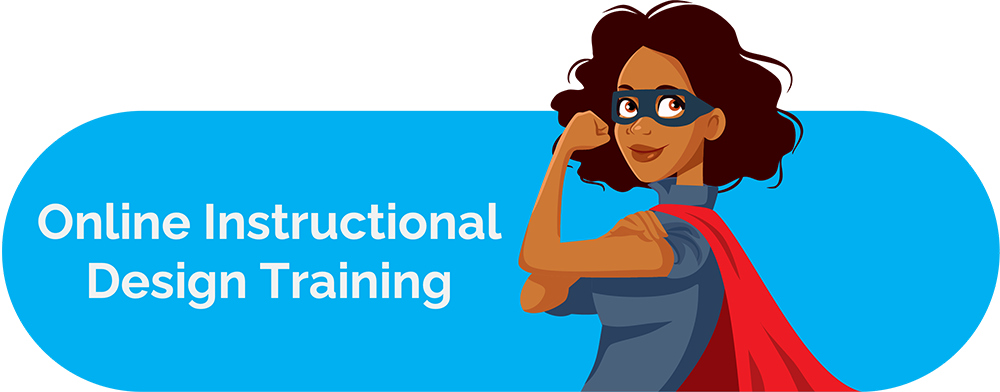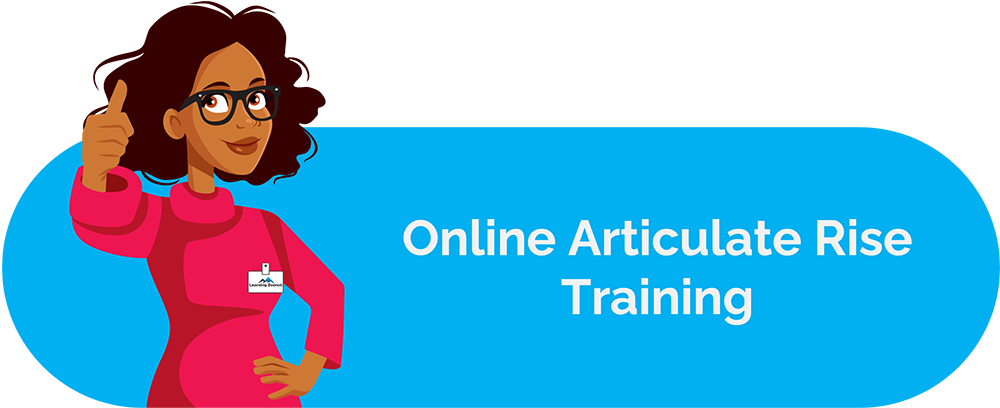Mobile learning has become prevalent in today's digital world. Mobile learning refers to the process of learning online using mobile devices. It is also called mLearning. Though it has been present since the early 2000s, mLearning has become popular in recent years as it provides access to education to anyone who has a mobile device, anytime, anywhere.
Table of Contents
- Benefits Of mLearning
- Mobile eLearning Trends to Adopt in your Organizations
- How to use mLearning apps for training and skill development?
- Mobile User Experience Design
- Meeting the needs of mobile users
- Infographics
- Knowledge Check!
- Frequently Asked Questions (FAQs)
- What is mobile learning?
- What are the benefits of mobile learning strategy?
- What are mobile learning applications?
- What are the types of mobile learning applications?
Benefits Of mLearning
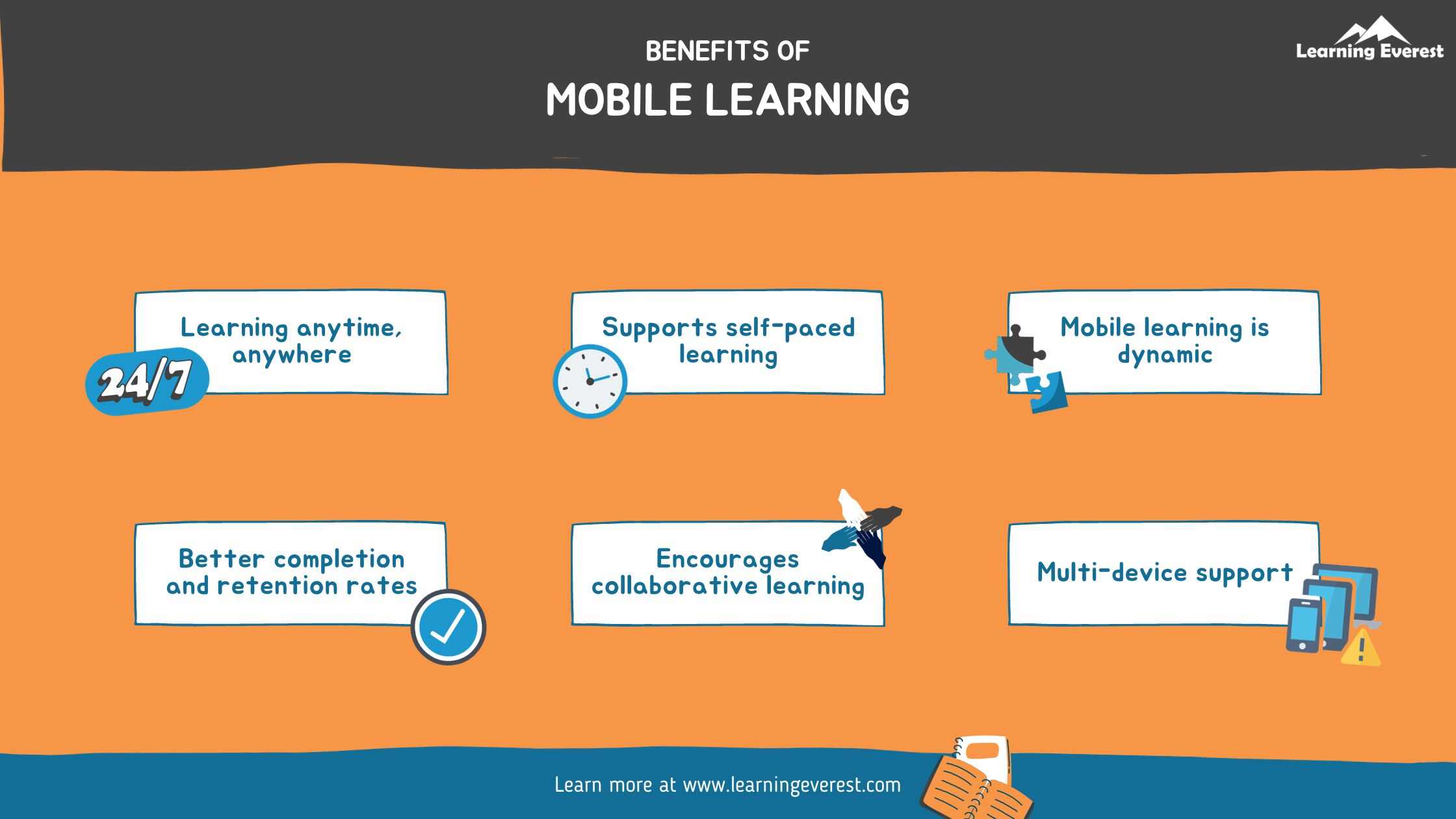
Benefis of Mobile Learning
1. Learning Anywhere, Anytime
Today’s learners prefer instant access to relevant content. People can learn from anywhere and anytime using their mobile devices. Therefore, mLearning is gaining the attention of organizations. Even when the learners are outside the confines of the offline training space, they can communicate with their instructor online, participate in quizzes, and access content at their convenience.
2. Supports Self-Paced Learning
Each person learns at different rates. Learning in a group may put the employees under pressure to understand a particular concept within a specific duration. Mobile learning eliminates this challenge. It allows learning at their own pace.
3. Learning Is Dynamic
Every individual has a different learning style. Mobile learning considers the different learning styles. While creating a mLearning program, the course developer put images, presentations, audio files, or videos into their content. mLearning supports to create an engaging experience. It caters to the needs of learners with different learning styles.
4. Better Completion Rate and Higher Retention
Mobile apps usually deliver small-size courses. mLearning content is in a concise format. Moreover, it allows easier understanding and retention. In many instances, learners are discouraged from learning when they see many learning materials. In mobile learning, lessons are taught in bites. Therefore, it helps in decreasing cognitive overload and learning time. It also increases the chance for knowledge retention.
5. Encourages Collaborative Learning
Learners can learn at their own pace. They can also keep in touch with their teachers and peers. The end goal of this collaborative learning is knowledge sharing. Thus, there are possibilities for different online learning communities.
6. Multi-Device Support
The mLearning content supports all devices. The content can be responsive on all screen sizes.
Mobile eLearning Trends to Adopt in your Organizations
Mobile is the best learning tool in this digital era. Mobile learning applications are needed for corporates and other organizations to upskill their employees. The following are trends are here to stay:
1. Mobile applications
Education is vital for workforce development—employees worldwide like on-the-go learning. Mobile applications can make this possible.
Mobile-based education apps provide interactivity and personalized learning. Artificial Intelligence has a significant impact on both education and mobile app development. It is hard for trainers to give attention to every learner during a training program. But AI helps get familiar with the employees’ learning participating in a training.
The fusion of learning with fun drives more engagement with students. Educational apps are created systematically. It makes it possible for the learners to go with the flow. L&D team can create micro quizzes and interactive exercises. mLearning apps allow learners to read the study material from the education apps. Learners can also discover miscellaneous study material by using education apps. The mobile apps are available for learners, and they can learn at a convenient time. Education apps come with many material resources. It also provides a better learning experience.
A balanced approach to the learning system should be included in a proper ratio. Organizations can also outsource vendors to get customized mobile eLearning apps.
2. User-Generated Content
Training newly hired employees is one of the organizations’ significant issues while onboarding. And it is a fact that every talent has their learning capacity and caliber. Thus, many organizations use custom mobile eLearning content that suits different learning objectives. It is customized content according to different learning styles. Your organization should try such content to train new talents.
On-the-job training is essential in the corporate world. Most organizations include skills training as part of their training framework. L&D teams provide continuous training to ensure an employee gets help every time they need help. Most people now Google to find out how to do a specific task. Employees do the same at their workplace. They prefer asking for help from a co-worker.
Therefore, organizations can have User Generated Content through mobile phones. It provides opportunities for quick learning. UGC enables learners to create content from their own experience. They can also share it with their co-workers. A video or note from a co-worker or trainer would be more effective than watching a generic video. Organizations can quickly train employees on creating User-Generated Content. It can be delivered in different formats.
3. AI-powered Chatbots
There are chatbots powered by AI technology in many portals. Do you know the primary purpose of such tools? They communicate with end-users and address their issues. That is why AI chatbots are so popular, and now mobile eLearning apps and portals also have such learning tools.
Through them, organizations easily set reminders of sessions, interact with their learners and deliver relevant information to them. Make most of this tool if your organization wants to personalize the learning experience. The chatbots are transformed by adding means powered by AI. A virtual coach can recommend content for a learner to learn. AI chatbots also facilitate a personalized mobile learning journey for the learner.
AI chatbots can transform mobile learning by doing the following:
- Send notifications to learners about their upcoming training sessions
- Guide the learner in the mLearning environment
- It interacts with learners.
- Deliver relevant information depending on the learner’s needs
- It provides feedback.
- With the increasing demand for personalized learning AI Chatbots are important in mLearning.
4. UX for mobile eLearning
The learning module must be efficient. Therefore, add good UX elements while building the course for mLearning. The designer must ensure proper navigation send engagement features.
How to use mLearning apps for training and skill development?
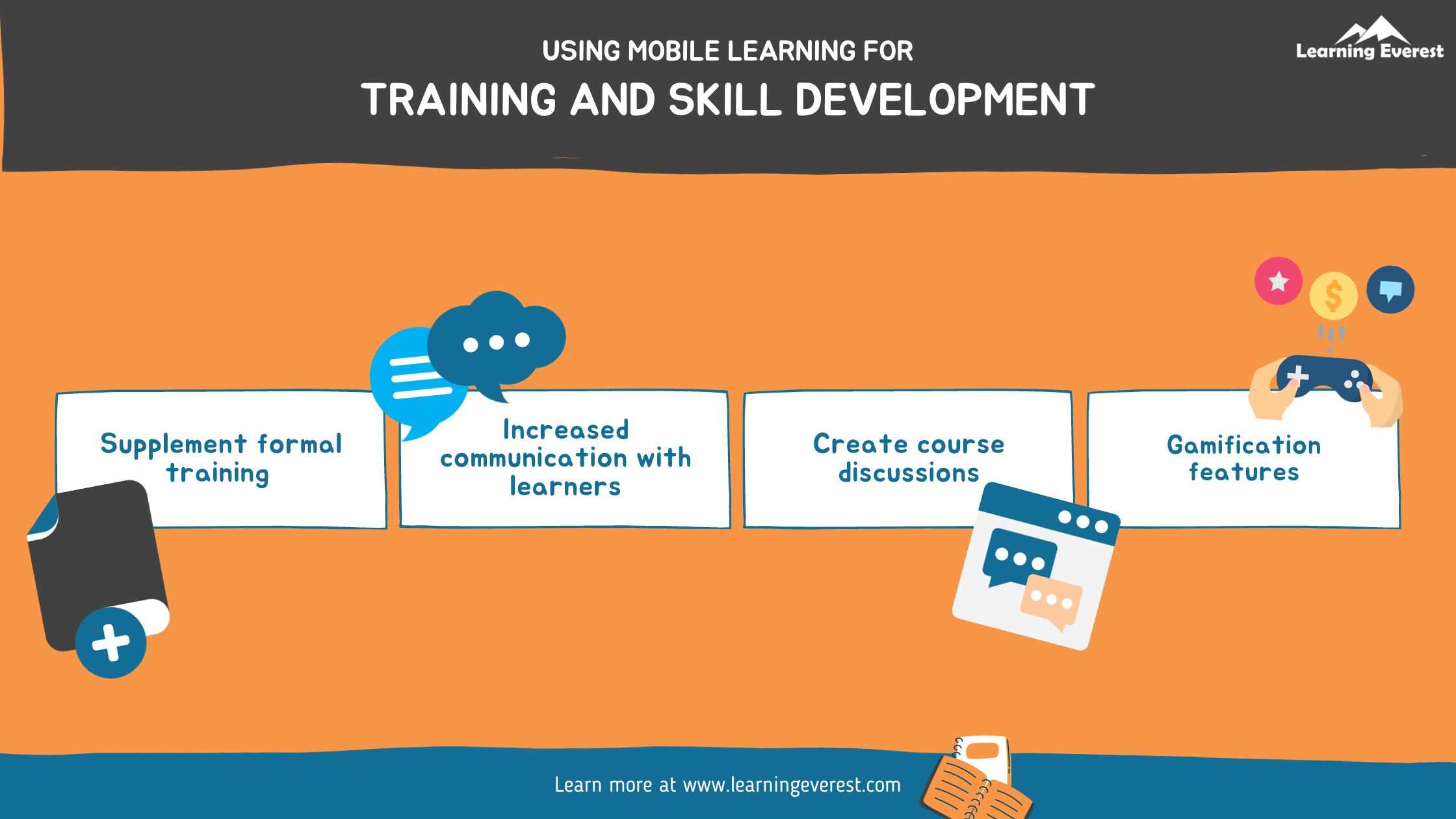
Using Mobile Learning for Training and Skill Development
1. Supplement Formal Training
- mLearning can be a supplement to formal training. Mobile learning apps allow the creation and delivery of courses in a simplified format. These apps can reinforce the learning of your employees.
- They can also test their knowledge through flashcard quizzes, thus helping to refresh their memory and retain knowledge.
2. Create Course Discussions
- mLearning encourages collaboration between peers and experts. Thus, the employees can share ideas, which stimulates their thinking. Discussions boost engagement and increase completion rates.
3. Gamification Features
- Keeping the learner engaged is very important in all types of learning. Add gamification features. Features like rewards can help keep the employee’s interest in learning. Their desire to earn more points will grow, and thus they will be encouraged to complete the learned assigned to them.
4. Increased Communication with Learners
- mLearning app simplifies maintaining communication between the facilitator and the employees. The learning apps can send notifications about the courses or microlearning content to the learner.
Mobile User Experience Design
It designs user experiences for hand-held and wearable devices. Designers create applications to meet the requirements of mobile. To optimize interactive experiences, the designer must focus on accessibility, discoverability, and efficiency.
Meeting the needs of mobile users
Before, desktop users were the targets of designers. But now, mobile users are the majority online. They do not have the advantages that desktop users enjoy. Designers must therefore create designs that make the best use of smaller screens. The learning experience must be tailored to match the mobile learning environment.
Also, the attention span on mobile is short. Therefore, mobile phone users want faster results with minimal effort. While designing a mobile educational app, creating a responsive or adaptive design is essential. A responsive design is a single design that would adjust to all devices. On the other hand, an adaptive design is several versions tailor-made for various screen sizes.
However, the focus must be given to context, convenience, and consistency. Therefore, decide how to present the content and what features are essential. The goal is that the user finds what they want quickly.
The following are things that would help in designing a mobile application:
- Minimize Content
- Design a minimal page.
- A page must take less than three seconds to load.
- Remember, mobiles users prefer portrait mode
- Simplify Navigation
- Give short-key access to features.
- Don’t mix navigation patterns.
- Restrict User Inputs
- Learners do not like to tap buttons continuously.
- Keep the URLs short.
- Minimize data inputs on forms.
- Allow permanent sign-in.
- Make sure that data retains if the connections fail.
- Continuity and Consistency
- Learners must continue where they left off to switch between mobiles and desktops easily.
- Maintain continuity.
- Let users switch from mobile to desktop freely.
Infographics
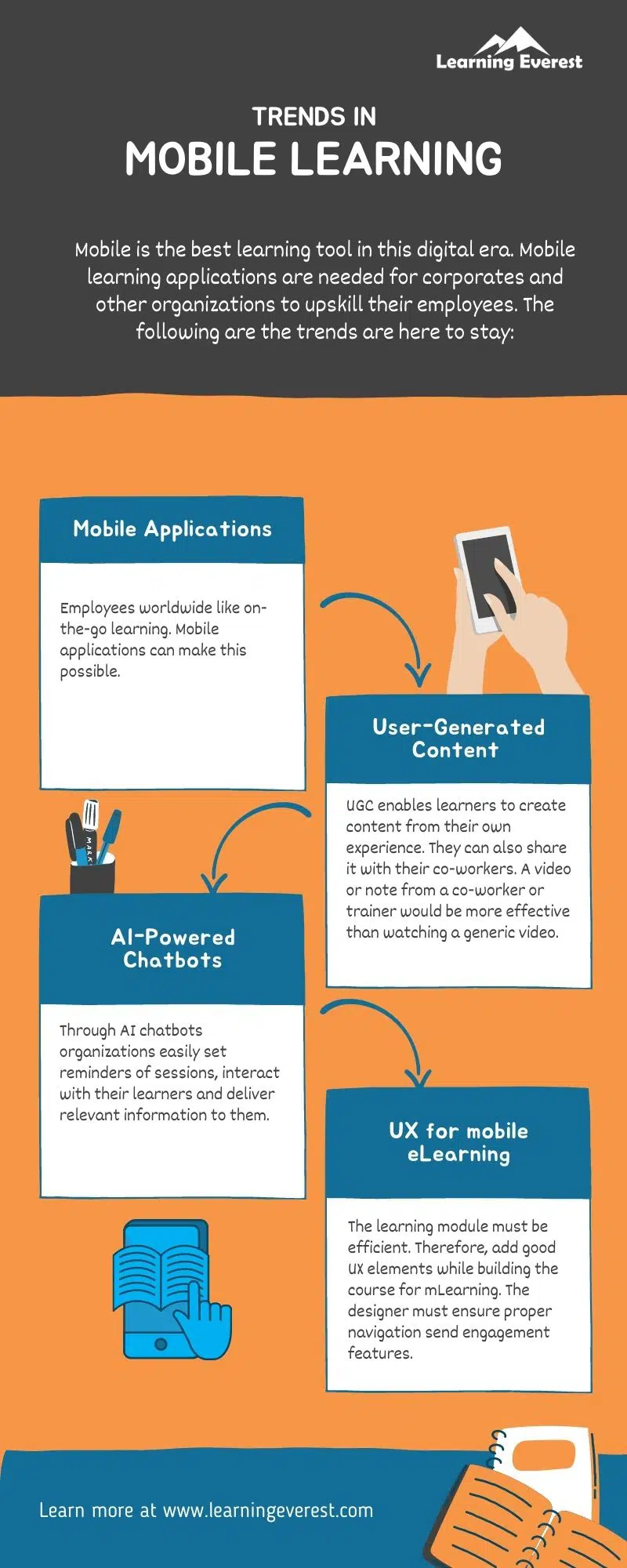
Mobile Learning Trends
Knowledge Check!
Frequently Asked Questions (FAQs)
What is mobile learning?
Mobile learning is a form of distance education accessible to learners through mobile devices. It is possible to learn as long as you have a modern mobile device connected to the Internet.
What are the benefits of mobile learning strategy?
Mobile learning strategies provide the following benefits for corporate training:
- Provide flexibility to learners.
- Offer multi-device support.
- Higher learner engagement.
- It has better completion rates compared to other types.
- Promote social learning.
What are mobile learning applications?
Mobile learning applications are software designed to be used by learners on a mobile device using specialized software tools. It is a software application downloaded onto a mobile device and used to access training content.
What are the types of mobile learning applications?
Mobile learning apps can be classified into:
- Workplace learning apps
- Skill-building apps
- Educational apps
- Hobby apps


